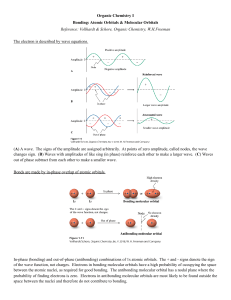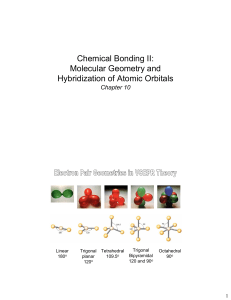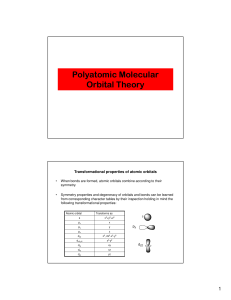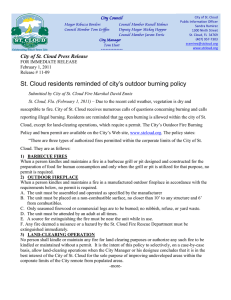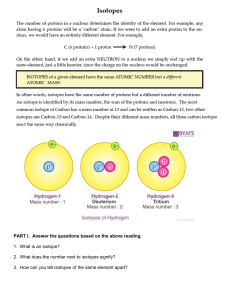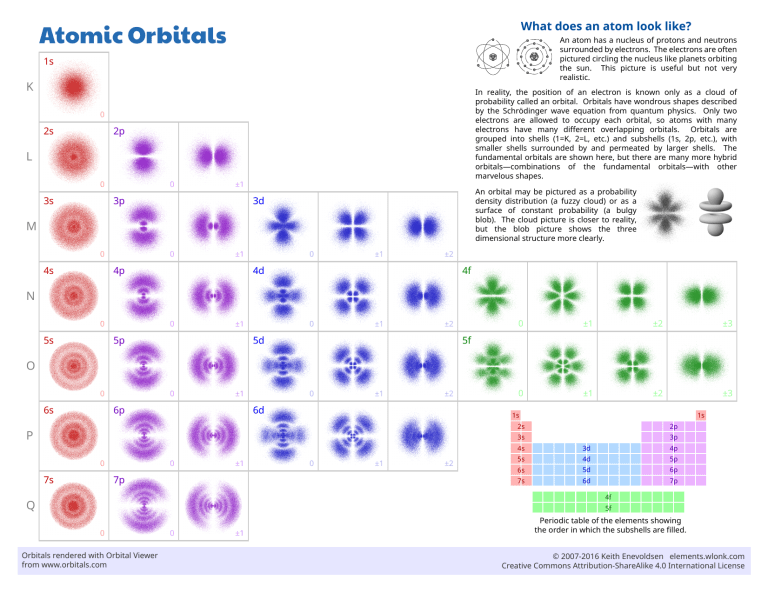
Atomic Orbitals What does an atom look like? 1s An atom has a nucleus of protons and neutrons surrounded by electrons. The electrons are often pictured circling the nucleus like planets orbiting the sun. This picture is useful but not very realistic. 2s In reality, the position of an electron is known only as a cloud of probability called an orbital. Orbitals have wondrous shapes described by the Schrödinger wave equation from quantum physics. Only two electrons are allowed to occupy each orbital, so atoms with many electrons have many different overlapping orbitals. Orbitals are grouped into shells (1=K, 2=L, etc.) and subshells (1s, 2p, etc.), with smaller shells surrounded by and permeated by larger shells. The fundamental orbitals are shown here, but there are many more hybrid orbitals—combinations of the fundamental orbitals—with other marvelous shapes. K 0 2p L 0 3s 0 ±1 3p An orbital may be pictured as a probability density distribution (a fuzzy cloud) or as a surface of constant probability (a bulgy blob). The cloud picture is closer to reality, but the blob picture shows the three dimensional structure more clearly. 3d M 0 4s 0 ±1 4p 0 ±1 ±2 4d 4f N 0 5s 0 ±1 5p 0 ±1 ±2 5d 0 ±1 ±2 ±3 0 ±1 ±2 ±3 5f O 0 6s 0 ±1 6p 0 ±1 ±2 6d 1s 1s 2p 2s P 3p 3s 0 7s 0 ±1 7p 0 ±1 ±2 4s 3d 4p 5s 4d 5p 6s 5d 6p 7s 6d 7p 4f Q 5f 0 Orbitals rendered with Orbital Viewer from www.orbitals.com 0 ±1 Periodic table of the elements showing the order in which the subshells are filled. © 2007-2016 Keith Enevoldsen elements.wlonk.com Creative Commons Attribution-ShareAlike 4.0 International License
